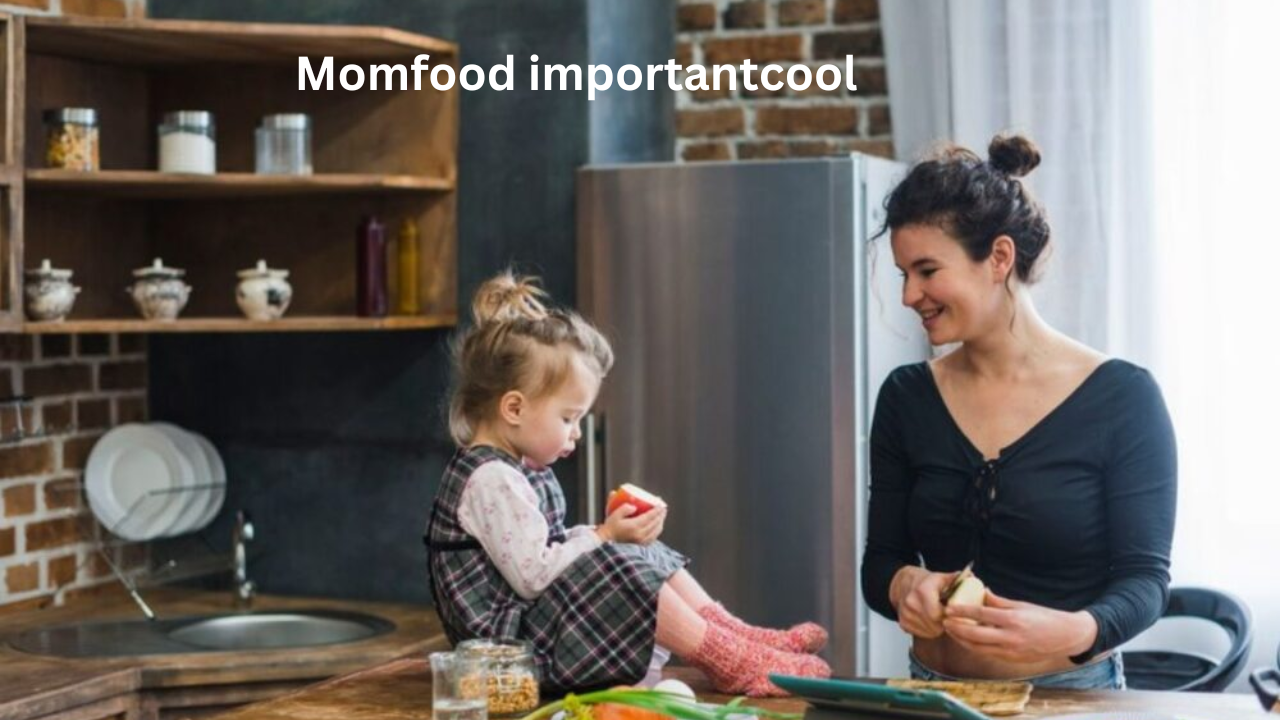Introduction
In today’s fast-paced world, where convenience often takes precedence over quality, a quiet revolution is stirring in kitchens across the globe. Enter “Momfood Importantcool”—a phrase that’s more than a quirky mashup. It’s a powerful reminder of the role food plays in parenting, especially when mothers take the lead in crafting nutritious, meaningful meals. This concept champions not only the importance of feeding children well but also redefines wholesome, home-cooked meals as something both essential and cool.
Parenting is no longer just about raising children—it’s about nurturing future generations with intention, love, and balance. Food has always been at the heart of caregiving, but now, it’s being elevated to new heights. In the age of Instagram-worthy meals, school momfood importantcool lunch hacks, and plant-based lifestyles, “momfood” has gone from traditional to trendsetting. And with that evolution comes the realization: wholesome food is not only good for kids—it’s a statement of cool, conscious parenting.
This article dives deep into what makes “Momfood Importantcool” such a vital cultural and nutritional movement. We’ll explore the science behind mom-led nutrition, how to make healthy food appealing, practical strategies for busy households, and the challenges that come with it. By the end, you’ll see why this idea is catching on—and why it matters more than ever.
What is “Momfood Importantcool”?
“Momfood Importantcool” is a phrase that symbolizes a modern parenting ethos rooted in nutritious, home-prepared meals that are both meaningful and stylish. It celebrates the central role that mothers—and by extension, all caregivers—play in establishing a family food culture that emphasizes health, love, and creativity. This isn’t just about what’s on the plate; it’s about the intention and care behind it.
At its core, “Momfood” refers to the comforting, nourishing meals that mothers have traditionally prepared—hearty soups, vibrant vegetables, warm stews, and homemade snacks that evoke feelings of safety and warmth. But “Importantcool” elevates this concept by suggesting that these meals aren’t just emotionally fulfilling—they’re also relevant, modern, and desirable. This fusion of function and flair turns everyday cooking into a form of self-expression and empowerment.
In the digital age, where food trends come and go at lightning speed, “Momfood Importantcool” stands out by grounding itself in authenticity. It’s about real ingredients, real effort, and real love. And it’s gaining momentum as more families reject overly processed meals and reconnect with traditions passed down through generations—updated for modern tastes. Think quinoa and veggie-packed stir fry instead of boxed mac and cheese; smoothie bowls over sugary cereals.
Ultimately, this idea is about redefining what it means to be a “cool mom.” Not someone who gives in to junk food demands but someone who makes broccoli exciting, lunches Instagram-worthy, and mealtimes a source of pride. It’s a movement that’s here to stay.
The Science Behind Momfood: Why It Matters
When it comes to raising healthy children, nutrition is non-negotiable. Scientific research consistently shows that the food children consume in their early years has a lasting impact on their physical development, cognitive performance, emotional stability, and even their immune systems. This makes the role of “momfood”—home-cooked, nutritious meals—all the more significant.
For instance, studies published in journals like The Lancet and Pediatrics highlight the link between balanced diets and improved academic performance. Children who consume diets rich in fruits, vegetables, whole grains, and lean proteins tend momfood importantcool to score higher on tests and exhibit better concentration. In contrast, diets high in sugar, artificial additives, and ultra-processed foods are associated with hyperactivity, fatigue, and behavioral issues.
Mothers, often being the primary caregivers, are in a unique position to shape their children’s relationship with food from day one. From breastfeeding to preparing their first solid meals, moms introduce taste profiles, textures, and food habits that can stick for a lifetime. The routines established at home—whether it’s eating together at the table or packing lunches with whole ingredients—create a strong nutritional foundation.
Moreover, there’s a psychological angle. Children who grow up around healthy food choices and involved caregivers tend to have better self-esteem and emotional resilience. The ritual of sharing a well-prepared meal fosters bonding and communication. So, when we say “momfood is important,” we’re not just talking about the vitamins and minerals—it’s about nurturing body and soul. That’s the power of Momfood Importantcool.
The Cool Factor: Making Nutritious Food Appealing to Kids
Let’s be honest: healthy food doesn’t always win the popularity contest with kids. Broccoli rarely competes with pizza in their minds. That’s why modern moms need to channel creativity to make nutrition not just palatable but downright exciting—and that’s where the “cool” in Momfood Importantcool shines.
First, it’s all about presentation. A plain plate of veggies might not entice a child, but arrange those same veggies into a colorful smiley face or a rainbow and suddenly, dinner becomes art. Bento box lunches, smoothie art, and themed dinner nights are all popular strategies for making meals feel like a treat rather than a chore.
Social media has also played a big role in inspiring parents to level up their food game. Platforms like Instagram and TikTok are full of ideas—from DIY frozen yogurt pops made with fresh fruit to dinosaur-shaped sandwich cutters that make even whole grain bread fun. By aligning with trends, parents can show kids that nutritious food isn’t “boring”—it’s part of a momfood importantcool cool lifestyle.
But the coolest trick of all? Involving kids in the kitchen. Research shows that when children help prepare meals, they’re far more likely to eat them. Measuring ingredients, stirring sauces, or planting a mini herb garden empowers them to connect with what they eat. This hands-on learning fosters curiosity and independence—making healthy eating a personal achievement rather than an obligation.
So, the next time your child asks for fast food, serve up your own version—with real ingredients and a little flair. That’s the Momfood Importantcool way.
Conclusion
The phrase “Momfood Importantcool” may sound playful, but its meaning is deeply profound. It speaks to a cultural shift where parenting, nutrition, and creativity come together to form a new standard for what it means to care. Moms aren’t just feeding their families—they’re shaping habits, attitudes, and identities around food that will carry on for generations.
In a world full of fast food and fleeting trends, choosing home-cooked, wholesome meals is a powerful act. It says, “I care.” It says, “Your health matters.” And it says, “Let’s make good food exciting.” This is why momfood is not only important—it’s cool.
Whether you’re packing a lunchbox, prepping dinner after a long day, or teaching your child to crack their first egg, remember: every meal is a chance to nourish and inspire. So embrace your inner food artist, your inner nurturer, and your inner trendsetter. That’s the heart of Momfood Importantcool.
FAQs
Q1: What exactly does “Momfood Importantcool” mean?
It’s a cultural phrase that blends the idea of nutritious, mom-made food with a modern, stylish twist—highlighting the importance and trendiness of healthy parenting through meals.
Q2: How can I get my picky child to eat healthier meals?
Try fun presentation, involve them in meal prep, and slowly introduce new flavors with familiar ones. Consistency and creativity are key.
Q3: Are there affordable ways to maintain a nutritious diet for my family?
Absolutely. Shop seasonal produce, buy in bulk, plan meals ahead, and reduce processed foods to save money while boosting nutrition.
Q4: What are some quick meals that are both healthy and kid-approved?
Think veggie-loaded quesadillas, fruit smoothies, homemade chicken nuggets, pasta with hidden veggies, and colorful rice bowls.
Q5: How do I teach my kids to appreciate healthy food?
Model the behavior, make food fun, talk about health benefits in kid-friendly terms, and celebrate small wins in food choices.
You May Also Read: https://infonewsblaze.com/beetlejuice-beetlejuice-reviews/






